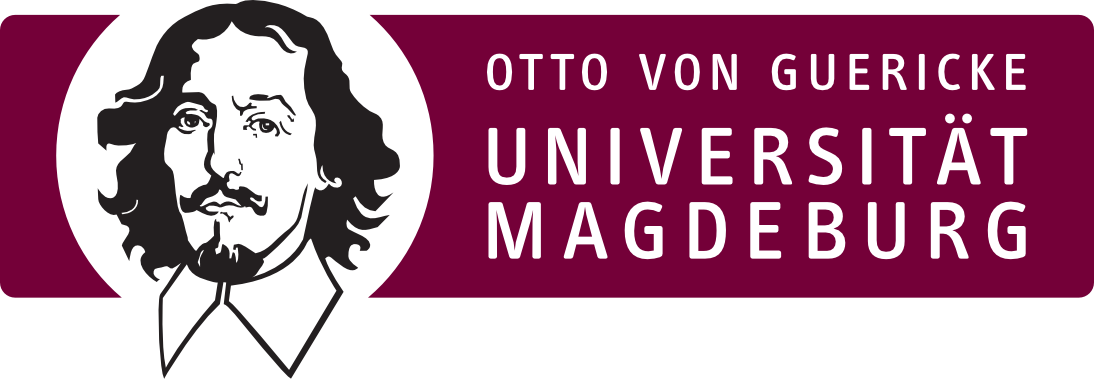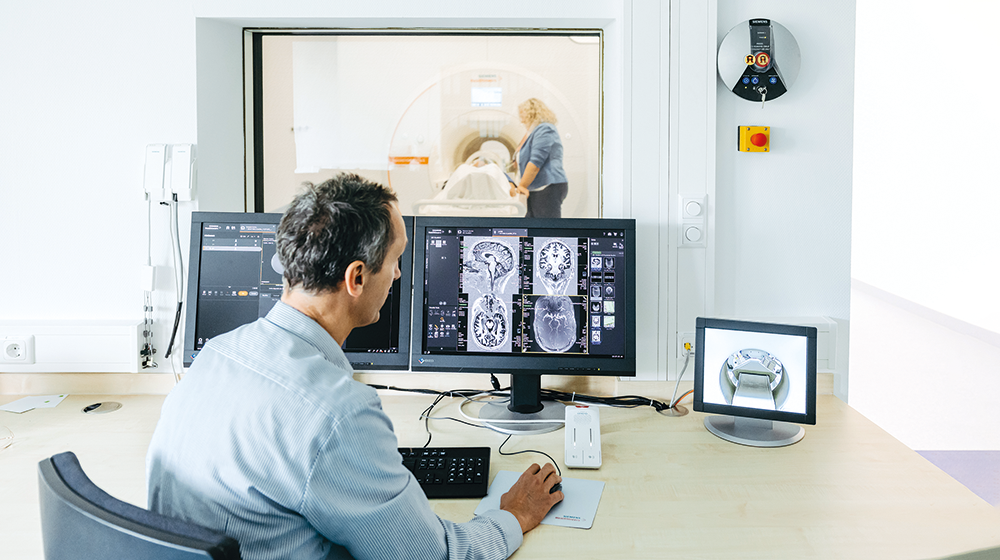
The brain is probably our most mysterious organ. How do pictures, sounds and smells find their way into our brain? What does it do with them? How does the brain think? How does it make decisions? Once it was only possible to open an individual’s skull after their death to take an inquisitive glance into the gray and white brain matter inside. Later, x-rays made it possible to look inside living brains. However, x-ray radiation damages cells and cannot provide any information about brain functions. Nowadays, cutting-edge research in the field of neuroscience is driven by imaging methods. Magnetic resonance imaging machines contain state-of-the-art engineering technology that uses a strong, static magnetic field to generate clear images. On the medical campus of Otto von Guericke University, “Haus 92” is home to the most modern 7-Tesla-MRI machine in the world.
Professor Dr. Oliver Speck advises visitors to put down their mobile phones and credit cards or everything could be deleted from them. The physicist and expert in biomedical magnetic resonance can tell stories - for example about a photographer whose camera equipment was pulled inside the MRI tube. Magnetic resonance imaging is an imaging method that poses no risk to health, its only risk - and one which cannot be underestimated - lies in its magnetic attraction to metal and ferromagnetic objects. “In the magnets’ field activity this magnetic pull is greatly accelerated,” says the Professor before explaining the “tube” to his visitors. Since spring 2023 it has attracted great attention among experts: with the Magnetom Terra.X, Impulse Edition, built in 2022, Otto von Guericke University Magdeburg has Europe’s most powerful 7-Tesla-magnetic resonance imaging machine (MRI). There is one other machine of this strength, which can be found at the University of California in Berkeley in the United States.
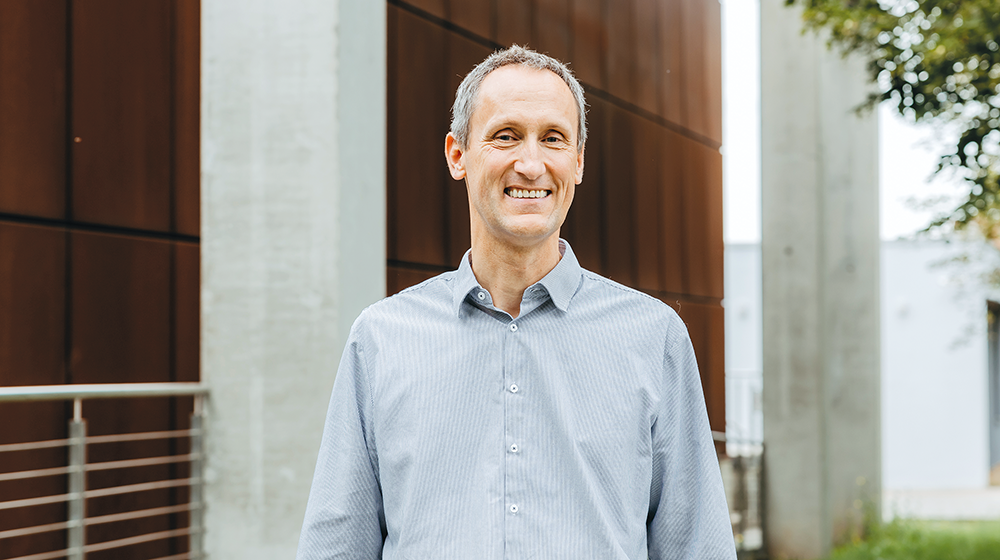 Prof. Oliver Speck (Photo: Jana Dünnhaupt / University of Magdeburg)
Prof. Oliver Speck (Photo: Jana Dünnhaupt / University of Magdeburg)
“Magnetom Terra.X, Impulse Edition” – the name makes you think of a fascination for the unknown, enthralling puzzles and completely new solutions. Oliver Speck can only agree: “With this new MRI machine we can take an even deeper look into the human brain, for example into the cortex.” The cortex is only around three millimeters thick and contains the neurons; nerve cells that are responsible for the incredible capabilities of the brain. This poses the question as to whether the scanner can observe people as they are thinking. “We hope to gain knowledge of the receipt, processing and transmission of neuronal signals.” With regard to understanding disorders, the professor goes on to say that “only when we understand how this signal transmission works will we be able to recognize when it is impaired.” And he adds: “We call our machine 7-Tesla Connectome MRI, as we are able to use it to measure the microstructures of the nerve connections between the areas of the brain, the so-called brain connectomes.” With this latest generation 7-Tesla MRI machine, he says, brain functions and structures can be depicted in thus far unrivaled precision. Supported by artificial intelligence, molecule movements could be measured, and conclusions drawn about the nerve connections.
Sharing equipment that is unique in Europe
This again makes the University of Magdeburg home to research infrastructure that is unique in Europe. As long ago as 2004, Magdeburg was the first place in Europe to install a 7-Tesla MRI machine for human applications. In 2006 Oliver Speck came to Otto von Guericke University Magdeburg, in order to develop the location including a broad network for image-guided brain research. The department that he founded at the time, “Biomedical Magnetic Resonance” is part of the Institute of Physics in the Faculty of Natural Sciences and located on the campus of the Faculty of Medicine - in the immediate vicinity of the Leibniz Institute for Neurobiology (LIN) and the University Department of Neurology.
The German Research Foundation (DFG) granted almost a million euros for the development of what is known as a Core Facility offering research infrastructure for joint use. Oliver Speck runs the Magdeburg UHF-MR Core Facility. The abbreviation stands for Ultra-High-Field Magnetic Resonance. The physical and digital cooperation platform for brain research will be available to scientists from the university, the Leibniz Institute for Neurobiology (LIN), the German Center for Neurodegenerative Diseases (DZNE), the German Center for Mental Health (DZPG) and Magdeburg’s STIMULATE research campus. “Moreover, 2013 saw the establishment of the GUFI research network, in which all German 7-Tesla operators are involved as well as some from France, Austria, Switzerland and the Netherlands,” adds Oliver Speck. GUFI stands for “German Ultrahigh Field Imaging” and is concerned, among other things, with quality assurance standards, education and cooperation. This is because at present, a 7-T connectome MRI of the kind in Magdeburg cannot be used in hospitals. “It is newer than the latest approved generation and itself a subject of research,” enthuses Oliver Speck, who is also spokesman for the Center for Advanced Medical Engineering (CAME) at the University of Magdeburg. “We can teach the machine new tricks. Physicists, engineers and medical technologists are working on ways of giving the machine even more capabilities through programming - for example, ways of compensating for movements of the head.” AI-based algorithms should speed up the MRI scans and thus improve the image quality, so that the most delicate structures in the brain can be even more clearly discerned.
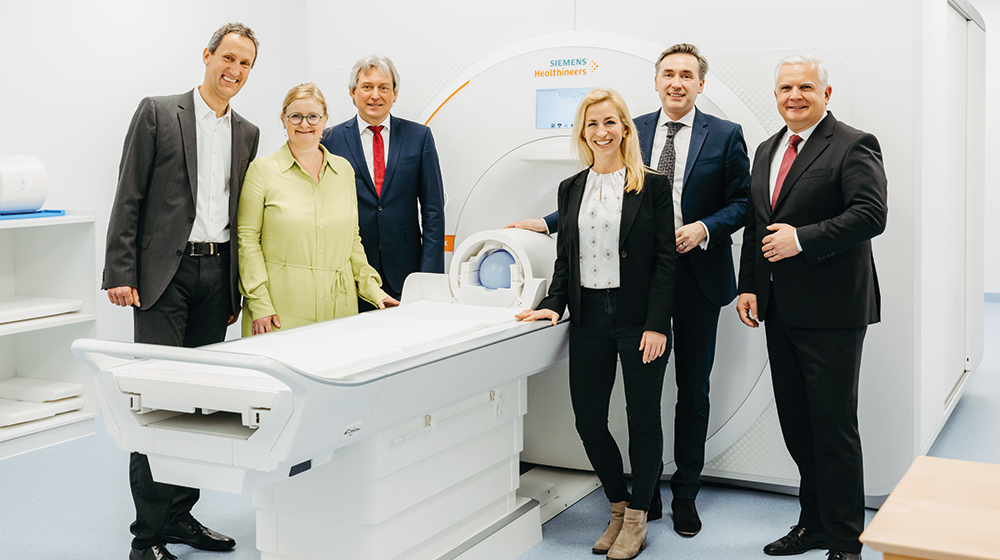 Prof. Dr. rer. nat. Oliver Speck, Otto von Guericke University Magdeburg, Prof. Dr. rer. nat. Daniela Dieterich, Faculty of Medicine, Dr. Jörg Wadzack, former Chancellor of the University of Magdeburg, Dr. Rebecca Ramb, Siemens Healthineers, Dr. Thomas Wünsch, State Secretary, Dr. Arthur Kaindl, Siemens Healthineers (Photo: Jana Dünnhaupt / University of Magdeburg)
Prof. Dr. rer. nat. Oliver Speck, Otto von Guericke University Magdeburg, Prof. Dr. rer. nat. Daniela Dieterich, Faculty of Medicine, Dr. Jörg Wadzack, former Chancellor of the University of Magdeburg, Dr. Rebecca Ramb, Siemens Healthineers, Dr. Thomas Wünsch, State Secretary, Dr. Arthur Kaindl, Siemens Healthineers (Photo: Jana Dünnhaupt / University of Magdeburg)
Most examinations with MRI worldwide
The Ultra-High-Field MRI machine including housing cost 15 million euros. It now stands next to Europe’s first 7-Tesla MRI machine from 2004. The latter was recently upgraded to incorporate the latest ultra-high-field technology. Both machines are part of the Center for Advanced Medical Engineering (CAME). Test subjects for various research studies come here. Meanwhile, more high-resolution 7-Tesla studies on people have been conducted in Magdeburg than anywhere else in the world. Top-class research really does mean working at the highest level here.
In recognition of her scientific work, Dr. Anne Maass has been appointed to the Dorothea Erxleben Visiting Professorship at the University of Magdeburg for the next two years. She leads a group of junior researchers in the DZNE and uses the MRI machine to better understand how the brain and its functioning change as we age and in age-related disorders. Professor Dr. Stefanie Schreiber is a research neurologist. In addition to her work as a senior physician in the University Department of Neurology, she runs a clinical and a DZNE working group that are interested in various central and peripheral nervous system disorders. Both scientists are part of the group management of a collaborative research center funded by the DFG for research into the “Neuronal Resources of Cognition”.
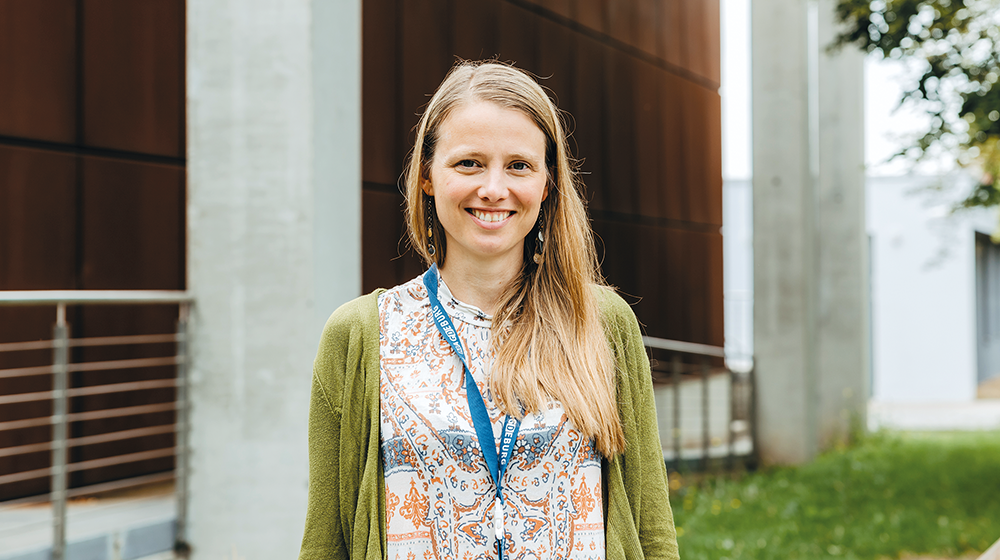
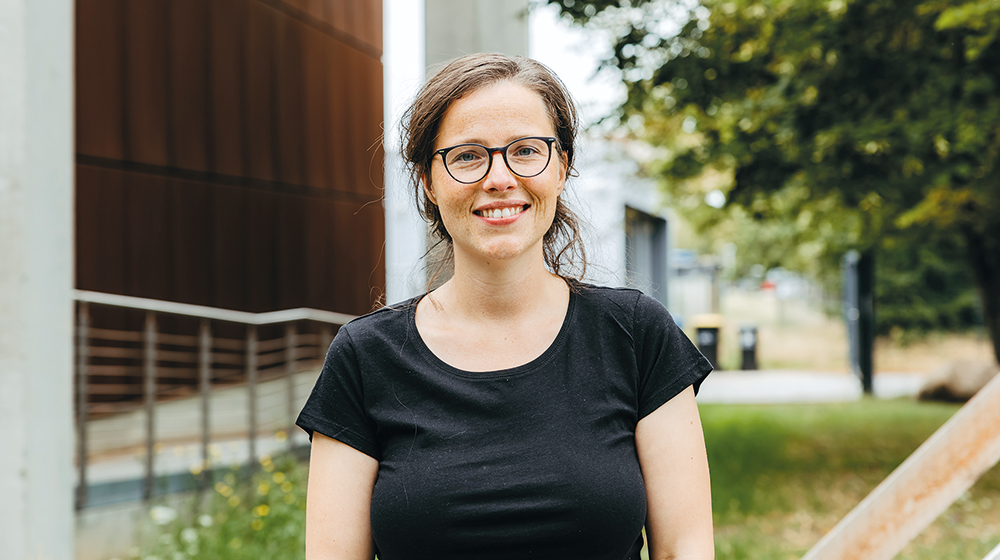
Dr. Anne Maass (left) and Prof. Dr. Stefanie Schreiber (right) (Photo: Jana Dünnhaupt / University of Magdeburg)
Functions and structures in the brain such as the circulation, brain volume and myelin are known as neuronal resources. Myelin is a fatty substance that facilitates and accelerates impulse conduction in the brain. “We want to identify the neurobiological causes for people’s individually varying neuronal resources,” says Anne Maass, adding that the hippocampus, which is responsible for cognitive performance and learning processes, is the focus of attention in this regard. How the blood vessels supply the hippocampus has a big influence on cognitive performance and the way it weakens as we age as well as on the manifestation of brain disorders, adds Stefanie Schreiber. In her day-to-day working life at the hospital, vascular and mixed dementias resulting from disordered blood flow to the brain play a key role. The nerve cells are damaged or die off as a result, which can lead to Alzheimer’s-like symptoms. “The tiniest tears in the vascular system can be partly responsible for this. If they were to be discovered at an early stage of illness, it might be possible to counteract progression of the disease,” says the doctor.
The fact that the 7-T connectome MRI machine is within walking distance provides the researchers with an ideal framework for their efforts. For example, the high-resolution imaging makes such delicate tears in the blood vessels clearly visible. The earliest changes in the brain’s function or structure, which are caused by protein deposits in Alzheimer's disease, could be visible on the images produced by the new 7-Tesla MRI scanner, stresses Anne Maass, who hopes for more findings about this disease. “It is indisputable,” says the neuroscientist, “that physical fitness training has a positive impact on the flow of blood to the hippocampus. However we do not yet know a great deal about the mechanisms involved.”
Test persons sought
Are messengers activated in the brain? How do they keep the neurons fit? It will be fascinating to see which secrets the Magnetom Terra.X will elicit from the brain. Incidentally, test subjects are being sought to join the voyage of discovery into the brain - that is the message from the research team. In addition to the cognitively high-performing “super agers” aged over 80 and patients with various age-related brain disorders, young people are also welcome. Interested parties can register without obligation on the DZNE website.
Guericke facts
-
The cylinder-shaped magnet in the 7-T MRI machine is almost three meters long, is also almost three meters in diameter and weighs 17 tonnes.
-
The magnetic field of a fridge magnet is around 0.05 Tesla. The 7-T MRI machine is 140 times as powerful and not just in a volume of just a few millimeters, but in an area of approx. 50 x 50 x 50 cm.
-
The average strength of the earth’s magnetic field in Germany is 50 microtesla. 7 T are therefore 140,000 times stronger than the earth’s magnetic field.
